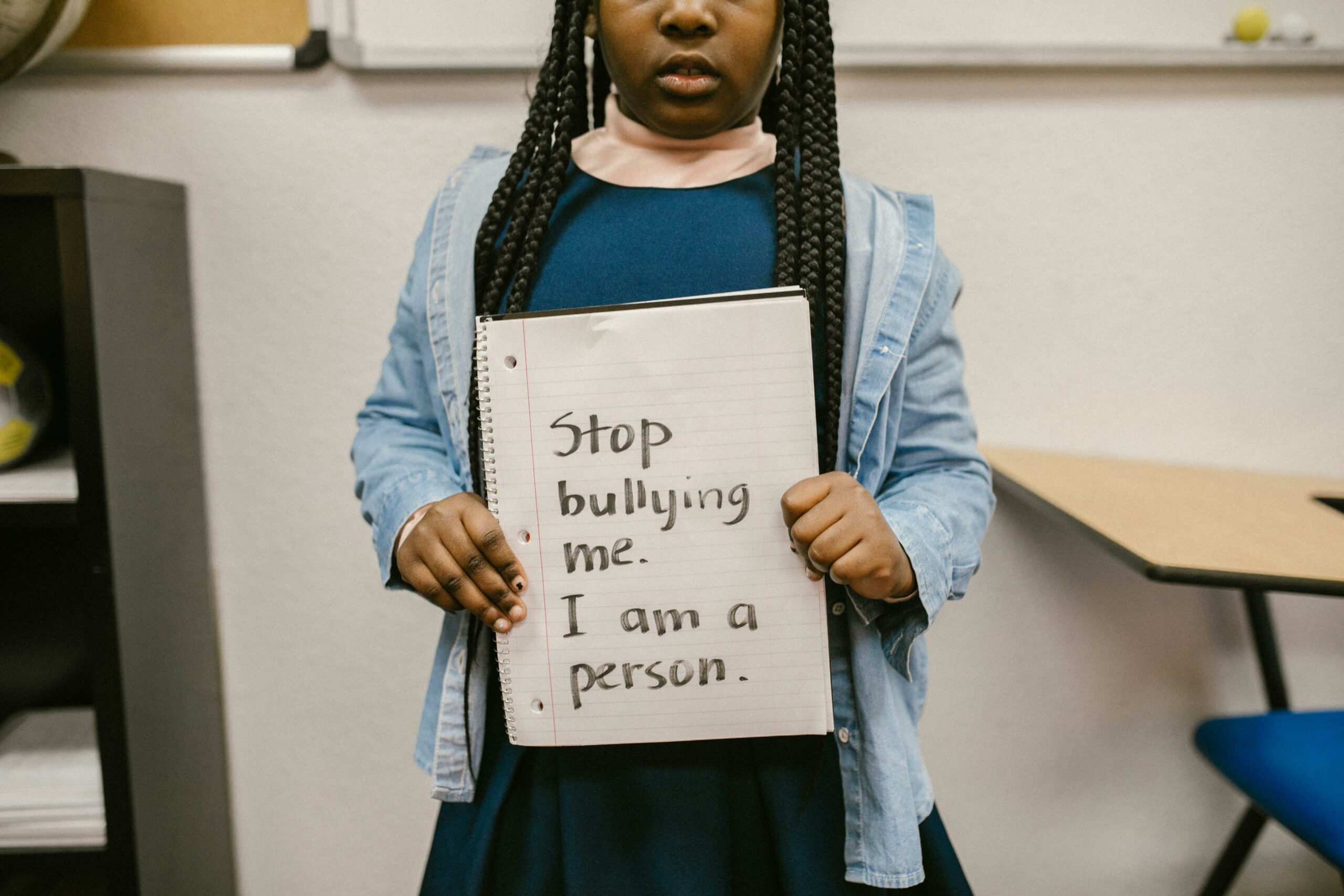In the last two blogs on bullying, I have talked to you directly about what you need to know and how to help your child if they are being bullied. In writing both of those blogs I noticed that I had a challenging time with giving suggestions knowing that there is a larger problem that needs to be addressed before these suggestions can be the most beneficial. In this final blog of the series, I am going to talk about what we need to do as a society to help decrease the epidemic that is bullying.
The first thing I need to address is the issue of how schools are managing bullying. There have been many times where I have heard students or parents say that schools do nothing about bullying. Honestly, from what they say and coupled with my own experiences with how my school managed bullying I believe it. My worst experience was when I was dealing with a bully and the assistant principal pulled us both into the same room and made us agree to a noncontact agreement. It was terrifying! All too commonly the no-contact agreement, whether its discussed at the same time or separately, is how the school handles bullying. This can lead to bullying to increase in intensity or duration.
 So how do we change it? There needs to be better tracking of bullying that has been reported to teachers and administrators and stricter consequences for the action of bullying itself. We are not talking about just some mean words being thrown around, but the lives of children who think dying is the better option than suffering from bullying. Is that harsh to say, yes, but may that will show how serious this issue is. It should also be taken as a serious threat if a child or teen tells another child/teen to go kill themselves, because right now there is no consequence to the seriousness of those words.
So how do we change it? There needs to be better tracking of bullying that has been reported to teachers and administrators and stricter consequences for the action of bullying itself. We are not talking about just some mean words being thrown around, but the lives of children who think dying is the better option than suffering from bullying. Is that harsh to say, yes, but may that will show how serious this issue is. It should also be taken as a serious threat if a child or teen tells another child/teen to go kill themselves, because right now there is no consequence to the seriousness of those words.
On a parental level I think there needs to be a serious discussion with all kids about the effects of bullying and the consequences of their actions. One of the biggest problems with bullying is what is called the bystander effect. Psychology Today describes the bystander effect as follows: “The bystander effect occurs when the presence of others discourages an individual from intervening in an emergency situation, against a bully, or during an assault or other crime. The greater the number of bystanders, the less likely it is for any one of them to provide help to a person in distress. People are more likely to take action in a crisis when there are few or no other witnesses present.” They go on to include that this can be cause by a sense that someone else will handle the problem, or social influence of how other people respond to the issue.
 If I had to make an educated guess, when it comes to children’s reactions to bullying it is more because of the social influence aspect that the bystander effect occurs. They could be targeted by the bully for standing up to them or other kids may bully them for trying to stand up to the bully, so they will not. What if that could change? What if even 60% of children were actively taught to stand up to the bully no matter who is around? If the majority of kids were taught to stand up to the bully no matter what and given the proper tools and skills to do so by both their parents and the school. Then we would have the majority and the social influence would shift. Now instead of it being looked down on for standing up for a bully, there will be social consequences to not standing up for those who are bullied.
If I had to make an educated guess, when it comes to children’s reactions to bullying it is more because of the social influence aspect that the bystander effect occurs. They could be targeted by the bully for standing up to them or other kids may bully them for trying to stand up to the bully, so they will not. What if that could change? What if even 60% of children were actively taught to stand up to the bully no matter who is around? If the majority of kids were taught to stand up to the bully no matter what and given the proper tools and skills to do so by both their parents and the school. Then we would have the majority and the social influence would shift. Now instead of it being looked down on for standing up for a bully, there will be social consequences to not standing up for those who are bullied.
Can we individually change the epidemic that is bullying? Not entirely. Better education for kids, and accountability for the action of children who bully is a good place to start. Advocation for those who cannot defend themselves is necessary so that these children do not feel alone and worthless, and can start a lasting change
About the Author
Samantha Ruwe (she/her), M.A., LPC is a Licensed Professional Counselor who specializes in dialectical behavior therapy. She works with teens and adults in a warm, compassionate, and non-judgmental manner to help clients build a life worth living. Samantha knows that therapy can be daunting to begin and is supportive of clients at all parts of their counseling journey. Click here to learn more about Samantha’s experience and therapeutic approach.
Sussex Publishers. (n.d.). Bystander effect. Psychology Today. https://www.psychologytoday.com/us/basics/bystander-effect

